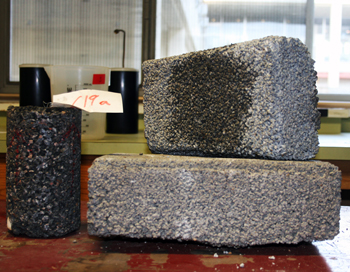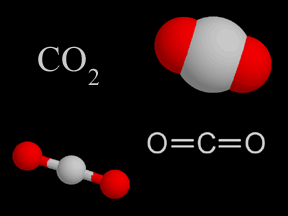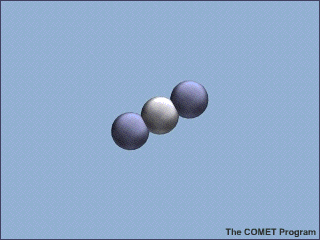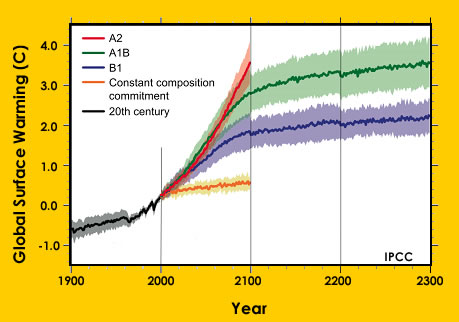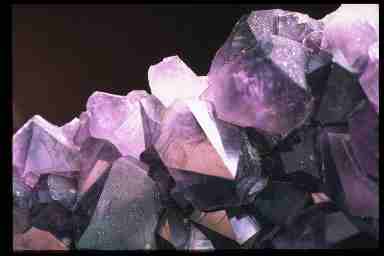Click on image for full size
Courtesy of Alan Abdulkader, Washington State University
How Solid is Concrete's Carbon Footprint?
News story originally written on June 30, 2009
Making concrete releases carbon dioxide (CO2), a greenhouse gas, into the atmosphere. The carbon dioxide from concrete, combined with greenhouse gases from many other sources, is causing Earth to warm. However, scientists have found that over many years concrete can absorb some CO2, taking it out of the atmosphere. So the buildings, sidewalks, and other structures that are made from concrete are able to capture some of the greenhouse gas that was released when they were made.
Why does making concrete send CO2 into the atmosphere? Carbon dioxide forms as cement, one of the major ingredients in concrete, is made from limestone. Also, it takes energy to make limestone into cement. The energy usually comes from fossil fuels which release CO2 to the atmosphere when they are burned.
Concrete is the most-used building material in the world, so the amount of CO2 created as new concrete is made really adds up. Many scientists think at least 5 percent of the CO2 released into the atmosphere by humans comes from making concrete.
Yet scientists have found that over decades concrete absorbs CO2 from the atmosphere. Elements in the concrete combine with CO2 to form the mineral calcite. New research suggests that there may be other minerals forming within concrete from absorbed CO2 too.
In Liv Haselbach’s lab at Washington State University concrete blocks like the ones in this picture are studied to help us better understand these processes. Haselbach, an engineer, does careful analysis of concrete samples to learn about the types of compounds, in addition to calcite, that may be forming in concrete.
Understanding how carbon dioxide is absorbed into concrete may help us find ways to make this happen faster. Someday we may be able to take as much CO2 out of the atmosphere as we put in when making concrete.


